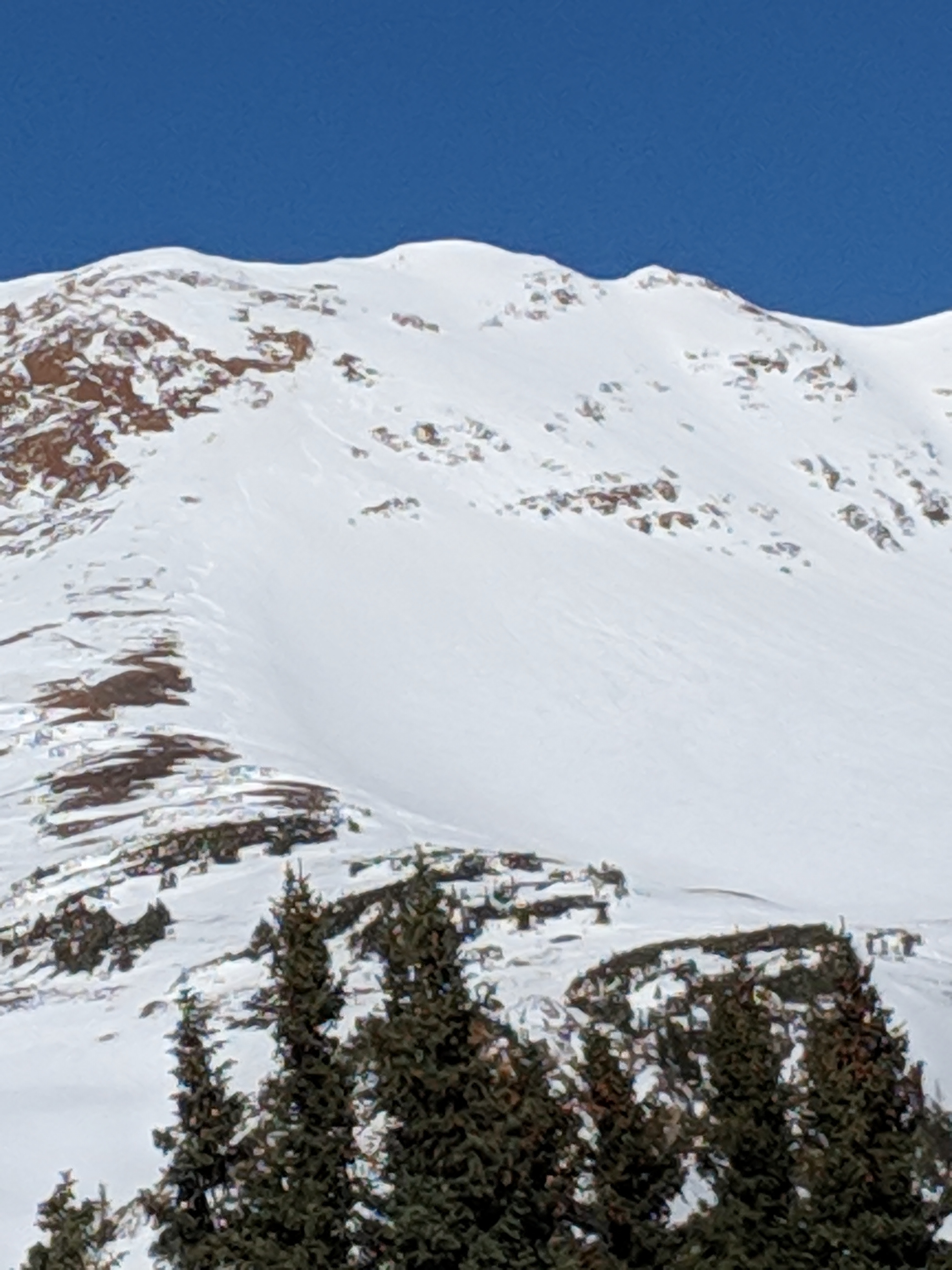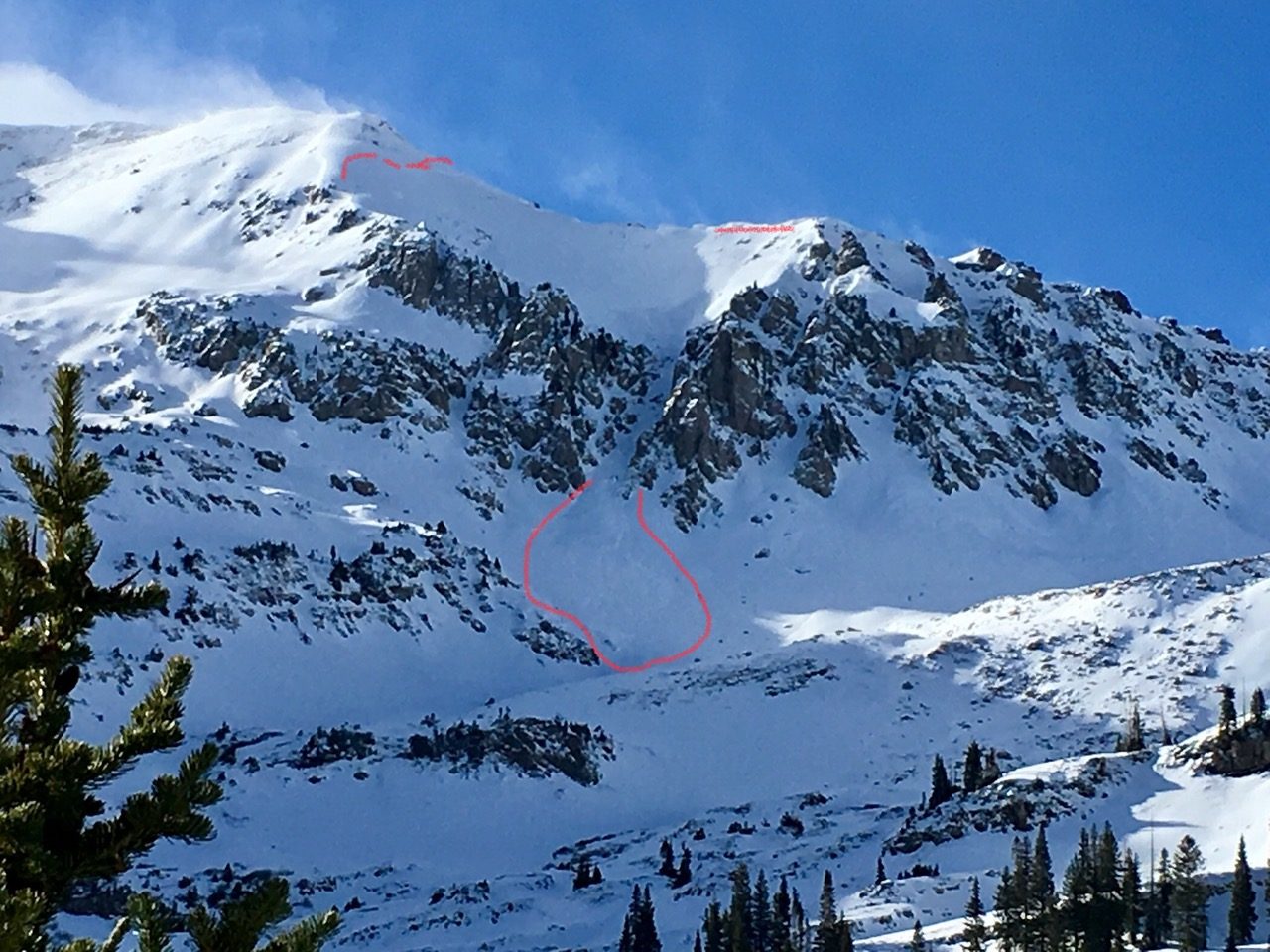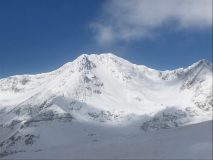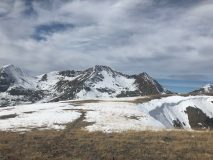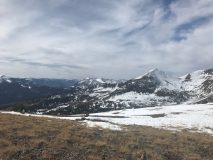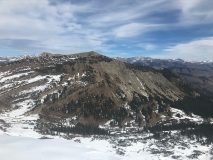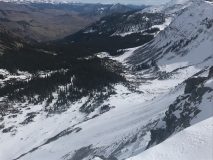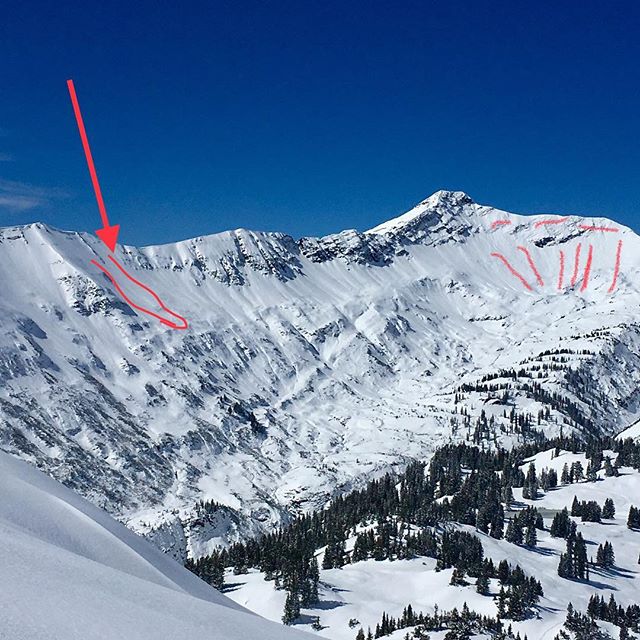Location: Paradise Divide Area
Date of Observation: 11/11/2018
Name: Joey Carpenter
Subject: Natural on NE Aspect, Treasury
Aspect: North East
Elevation: 12000
Avalanches:
There was a natural avalanche on the NE aspect off the ridge running SE below the “football field” of Treasury. R2D2. Limited visibility did not allow us to get a photo but I approximated on attached map.
Weather: Temps remained in the teens throughout the day. Light to moderate winds were transporting snow along ridge tops. Skies were obscured most of the day with only intermittent periods of longer distance visibility.
Snowpack: Leeward areas contain pockets of stiffening slabs across N, NE & E facing terrain NTL & ATL. 1-1.5mm facets below the crust formed in early November. Facets beginning to form on top of crust as well, .5-1mm in size. Multiple hand shears produced inconsistent slab structure based on location. Areas that have received more wind loading show more cohesive slabs where less wind affected areas have minimal slab cohesion. Spx BTL is more uniform and rapidly weakening.
Photos:




